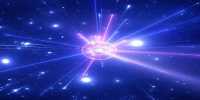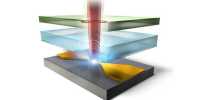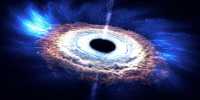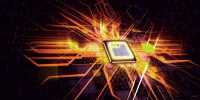Known as the “ferroelectric nematic” episode of liquid crystals, this step was first proposed by Nobel laureates Peter Debbie and Max Burn in the 1910s. After involving scientists for over a century, a new episode of matter has been discovered that could get huge expansions for technology. More than 100 years later, it could open the door to advances in the United States, from screens to display screens, unveiled by researchers in the United States. But what is it?
Liquid crystals exhibit the properties of both conventional liquids and hard crystals and are composed of rod-shaped molecules, which carry a positive charge at one end and a negative charge at the other. In this step, half of the molecules align their positively charged ends to one side, while the other half is in the opposite direction. This indicates completely random. One of the simplest stages in the existence of this element is the nematic phase, which scientists have been studying for nearly five decades.
After Debbie and Bourne proposed the state of spontaneous polar order for liquid crystals in their papers in 1912 and 1916, respectively, this can be observed in crystal crystals. When electric fields were applied, the uniform directions of the molecules could be reversed, and this property has since been known as “ferroelectricity “. Physicists, however, theorized a more organized system, consisting of patches or “domains” of similarly based molecules, also known as polar sequences.
The search for the electric nematic phase continued for almost a century despite the elusive return of liquid crystals, but in 2017 a new organic molecule called RM734 showed some strange behavior. At higher temperatures, it appeared in the nematic liquid crystal stage, but at lower temperatures, an abnormal stage was observed.
Further experiments showed that this phase of the RM734 was much more responsive in electrical fields than in normal nematic liquid crystals, in fact, 100 to 1000 times more. This “dramatic” reaction causes color changes to be observed. The new study, published in the Proceedings of the National Academy of Sciences, comes here in search of the bizarre episode of RRM434. With the help of a microscope, the cover colors appeared around the edges of the liquid crystalline cell under a weak electric field.
Professor Noel Clark, director of the SMRC at the University of Colorado Boulder, said in a statement, “When the molecules point all the way to the left and they all see a field that says, ‘Go to the right,’ the reaction is dramatic.”
This behavior indicated to the group that the molecules in the liquid crystal exhibited a strong polar order. But the team needed greater proof of existence; they actually wanted to see patches of marginal molecules. And when they cooled the RM734 from a high temperature, they found that spontaneous diamond domains formed spontaneously in front of their eyes, with a “stunning” uniformly lined molecule.
Clark said, “This confirms that this episode is actually a ferroelectric nematic fluid.” It may take a hundred years to create and search, but the work is certainly not done. Using computer simulations, the team will be able to figure out exactly what it is about the RM734 that allows it to display the stage after a long search. But the representations of their discovery are already clearly identifiable.
Clark said in a statement, “There are 40,000 research papers in nematic s, and in almost any one of them you will see interesting new possibilities if nematic is ferroelectric.”
















